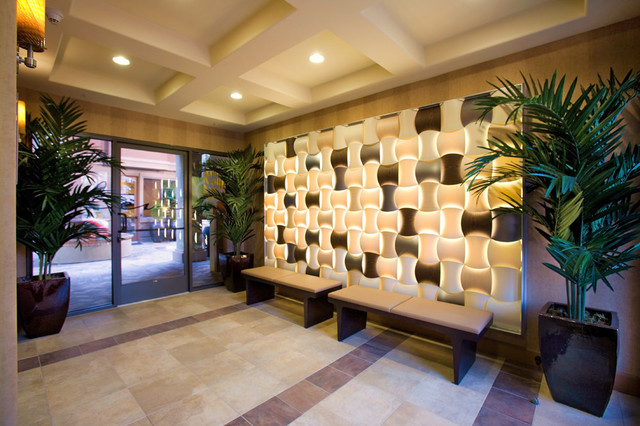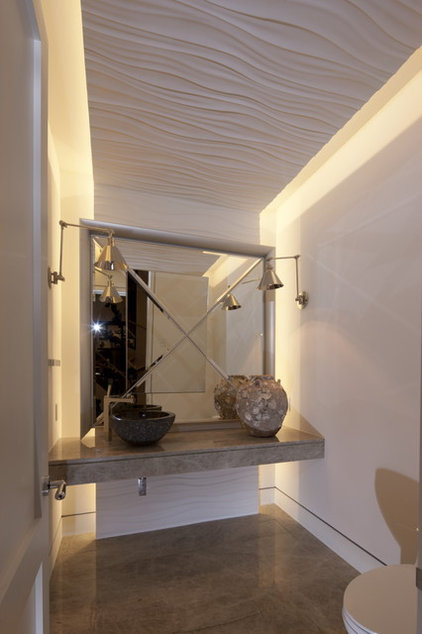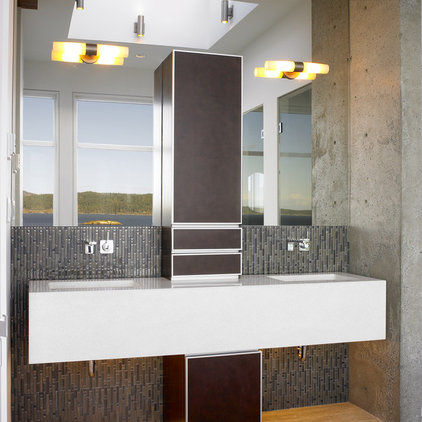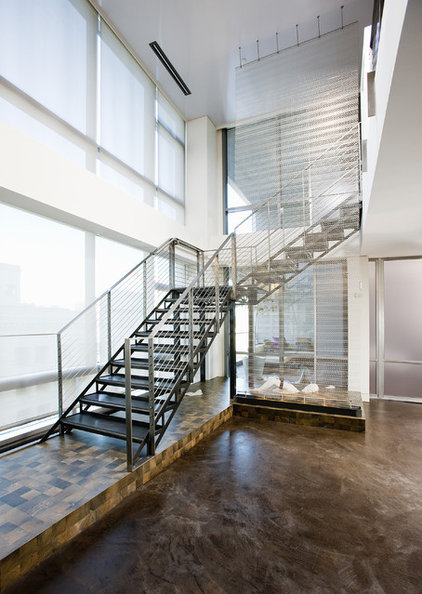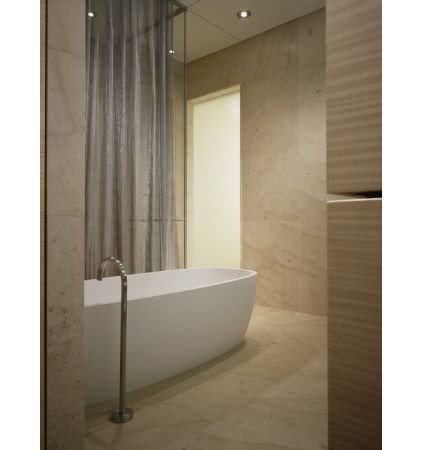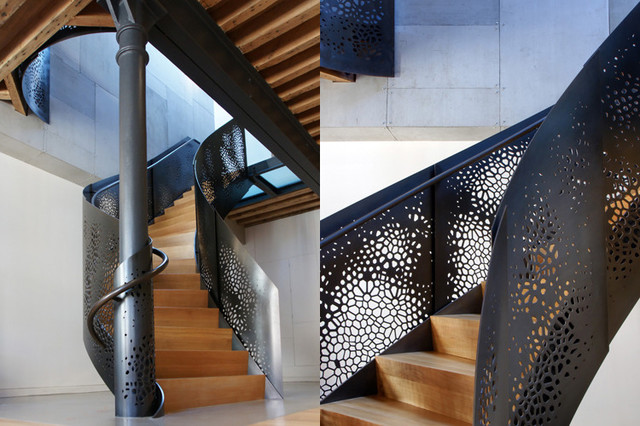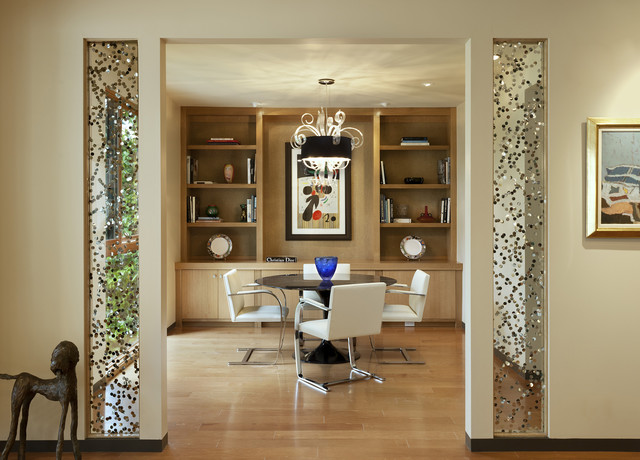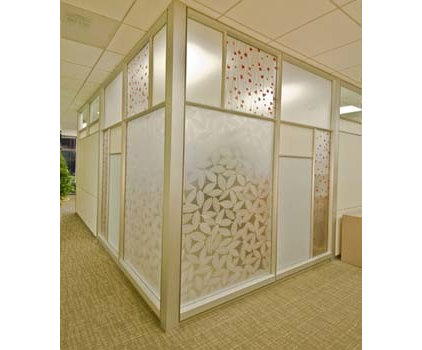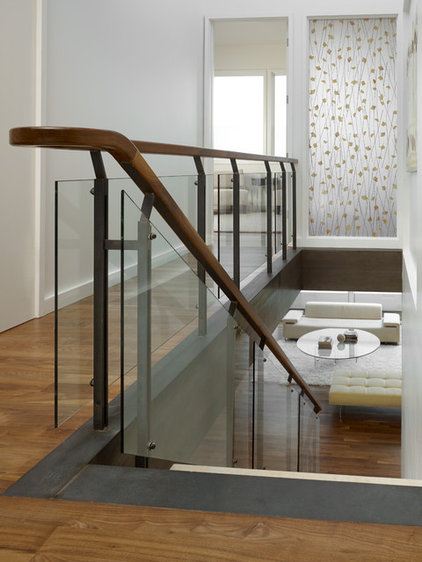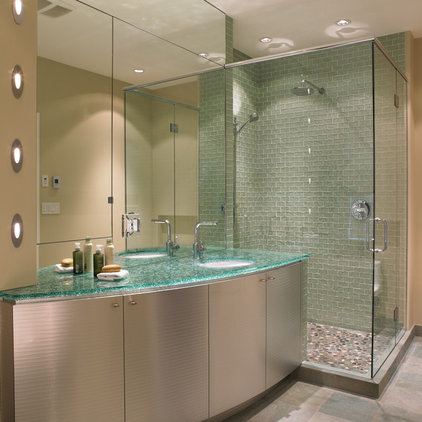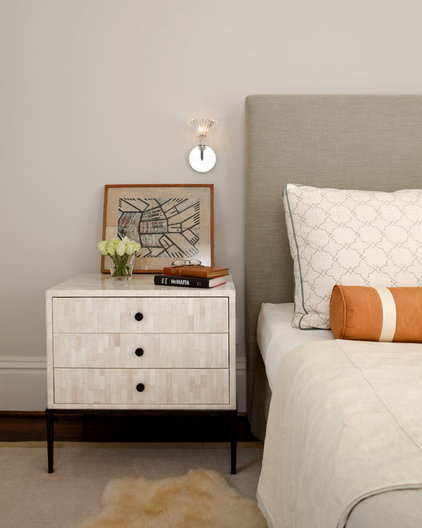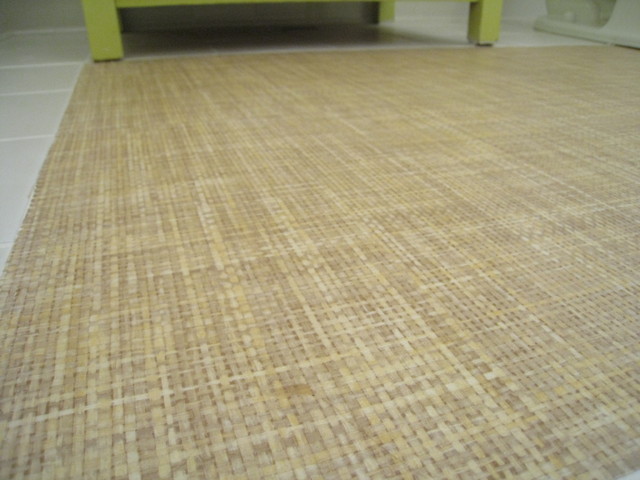10 Unusual Interior Materials for High-End, Custom Appeal
Some of these products have been around for ages but were previously used in different contexts or environments; today's production techniques have helped simple materials achieve sophisticated designs. Other products are newcomers, still on the cusp of recognition.
Learn about the options below so you can make well-educated design decisions.
|
by Design West
»
|
|
Woven resin. This woven 3-D surface wall treatment is from 3-Form. Available in many color options, it was once only seen in commercial projects but has become more popular in residences.
|
Since it's a rubber product, it's easy to maintain and suitable for kitchen and bathroom cabinetry.
Stainless steel isn't used just as a sheet metal today. In new applications, stainless steel pieces are linked together like chain mail or woven into screens.
This photo shows a woven stainless steel stairwell screen, accentuated by LED lighting at night.
|
by Workshop/apd
»
|
|
Sheet metal has been perforated with a laser-cut design here.
|
|
Laminated glass. Laminated glass is made of various flat products sandwiched between two sheets of glass; it has a high-end, pressed look.
Colored glass works beautifully with this application, too. Mirror can be used as a backing for an opaque, reflective insert in a closest door. You can try playing with frosted glass, Starphire glass or different fabric inlays. |
Unfortunately, not all of these products are easy to find if you're not working with a design professional. I'd suggest getting samples from companies online and then taking them to a cabinetmaker who's open to working with these products.
Textured glass counters. Glass as a functional countertop material has been refined by the Canadian company ThinkGlass. Laminated layers of glass can be built up to 4 inches thick, with a wide range of textures for the bottom layer. The texture on the bottom creates an appealing visual effect and hides any surface scratches.
Unfortunately, I have yet to find a producer for good sheets of bone mosaic. If you have a great source, please share it below!
|
Woven vinyl. Chilewich, well known for its placemats and runners, has a great product called Plynyl that can be used for wall-to-wall carpeting, carpet tiles and upholstery.
Although it's marketed as a commercial-grade product, Plynyl would make for great low-maintenance headboards or kitchen banquette upholstery. |
